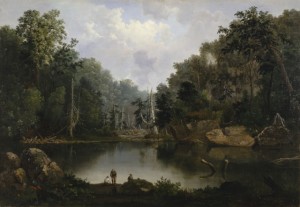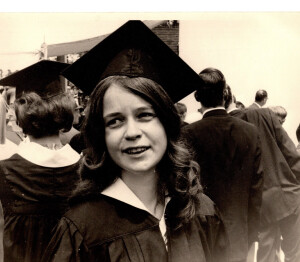Grateful thanks to blogger Aidan Place for his recent post about field recording. He provides a concise overview which led me to many of the links listed below. Significantly, his post was my introduction to Xeno-Canto, an amazing open access platform for archiving, analyzing, and discussing bird vocalization recordings from around the world.
Bloggers
- Aidan Place:Field Recording | The Eyrie 02015
Aidan Place: We live in an age where it is increasingly easy to document birds. We’ve reached the point where most rarities are well documented with photos and where most birders carry cameras. However, despite being in a particularly technologically advanced time in birding, there is one form of documentation which doesn’t seem to be growing much in popularity. That form is field recording. | The relative obscurity of recording bird vocalizations is surprising when you consider how much of an integral part audio is to birding. It is even more surprising when you realize that recording equipment is vastly less expensive than the high end photography equipment that seems to be everywhere in birding today. | This lack of popularity is clearly not for lack of reason to record bird song. Birding is a hobby in which a participant’s ears are just as, if not more important, than their eyes. Bird song is also beautiful and is one of the big draws of birding. You can see how recording bird song can be just as good of a way to document birds and to cement memories of a certain outing as photography. | Recordings themselves can be very beautiful, too. Even with inexpensive equipment, one can record good-quality, clear recordings. The below recording of a MacGillivray’s Warbler, for example, was captured with a $40 microphone; astonishingly cheap when compared to the amount of money many birders (myself included) are willing to spend on photography gear.
- Ted Floyd: How to Record Birdsong—Part 1 « ABA Blog 070914
Ted Floyd: “Two years ago in this space I wrote a three-part primer on the use of digital audio recorders for birding. A lot has changed since that time. The hardware I reviewed in Part 1 no longer is available. The software I discussed in Part 2 has been upgraded—plus, I’ve gotten better at using it. As to Part 3, the philosophical part, the key issues are still there, but I think they’re more acute now than they were in 2012. Any way you slice it, two years is a long time in the Digital Era. | It’s time for an overhaul. One other thing. Of late I’ve been fielding a lot of questions about making, analyzing, and archiving recordings of bird vocalizations. In the past few months, a number of my birding friends have acquired what we lovingly refer to as “cheap pocket recorders.” More than ever, folks are appreciating birdsong. Something’s “in the air” right now, and that’s exciting.”
- Ted Floyd: How to Record Birdsong—Part 2 « ABA Blog 071014
Ted Floyd: This is the second in a three-part series on how to record bird vocalizations. This part is about software—editing sound files and then sharing them with other birders on the internet. Click here to back up to the first part—an overview of the hardware you’ll need to get started.
- Ted Floyd: How to Record Birdsong—Part 3 « ABA Blog 071114
This is the third in a three-part series on how to record bird vocalizations. We looked in Part 1 at which hardware to use and how to use it. In Part 2, we learned about software. In this third and final installment, we take a broader view—what to listen for when we’re actually out in the field with our recording gear.
-
Ted Floyd :: xeno-canto
Ted Floyd’s user page on XC, listing 196 recordings as of 082415.
Tools
- Audacity: Free Audio Editor and Recorder
Audacity is available for Windows®, Mac®, GNU/Linux®; and other rating systems. Check our feature list, wiki, and forum.
- Raven: Interactive Sound Analysis Software
Raven is a software program for the acquisition, visualization, measurement, and analysis of sounds. | Raven Pro provides a powerful, user-friendly research and teaching tool for scientists working with acoustic signals. Raven Pro’s highly configurable views provide unparalleled flexibility in data display. Student discounts of 75% off and per country discounts of 25% or more off the price of Raven Pro are available. | Raven Exhibit is a sound visualization and recording system optimized for public displays and exhibits in places like science museums, zoos, aquariums, and nature centers. | Raven Lite is a free software program that lets users record, save, and visualize sounds as spectrograms and waveforms. Raven Lite is intended for students, educators, and hobbyists, and can be used for learning about sounds, as an aid in birdsong recognition, and in musical instruction.
- Best External Microphones GoPro Hero4 & iPhone 6
The Edutige EIM-Series are 3.5mm 4 pole microphones made for iPhones, iPads, iPod Touches, MacBooks, iMacs & Samsung Galaxy devices
Organizations
- xeno-canto :: Sharing bird sounds from around the world
xeno-canto is a website dedicated to sharing bird sounds from all over the world. Whether you are a research scientist, a birder, or simply curious about a sound that you heard out your kitchen window, we invite you to listen, download, and explore the bird sound recordings in the collection. | But xeno-canto is more than just a collection of recordings. It is also a collaborative project. We invite you to share your own bird recordings, help identify mystery recordings, or share your expertise in the forums. Welcome!
- Bioacoustics Research Program, Cornell Lab of Ornithology
The Bioacoustics Research Program develops and uses digital technology, including equipment and software, to record and analyze the sounds of wildlife around the globe. By listening to wildlife, we advance the understanding of animal communication and monitor the health of wildlife populations. We help policy makers, industries, and governments use this information to minimize the impact of human activities on wildlife and natural environments. | The mission of the Bioacoustics Research Program is to collect and interpret sounds in nature by developing and applying innovative technologies across multiple ecological scales to inspire and inform conservation of wildlife and habitats.
- Macaulay Library: Field Recording
Each year, the Macaulay Library leads recording workshops to teach state-of-the-art techniques for recording the sounds and behavior of animals in the wild. Participants learn through daily field recording sessions, coupled with lectures and demonstrations from our skilled staff. In collaboration the Cornell Lab’s Conservation Program, we also conduct capacity-building workshops in developing nations. To date, participants from Guyana, Cuba, and Guatemala have received training in recording techniques and systems for bioacoustics research and conservation. | Field Recording: We provide training, equipment, and resources to help document the diversity of life with sound and video. Through workshops and informal training sessions, we teach field techniques and share technical knowledge to help meet the challenges of recording birds and other animals in the wild.
- Macaulay Library: Field Recording : Sound Recording Workshop 2015
The workshop is held every spring in the heart of the Tahoe National Forest at San Francisco State University’s Sierra Nevada Field Campus. The field campus has a rustic feel, nestled under Ponderosa and Jeffrey pines at an elevation of 6000 feet. The main lodge is the central hub of activity where classroom sessions, dining, and shower facilities are located. Lodging is in tents on platforms (mattresses are provided). | From birds and bats to amphibians and insects, come and learn contemporary techniques for recording the sounds of wildlife with experts from the Cornell Lab of Ornithology’s Macaulay Library. Participants start each day with a morning field recording session, followed by afternoon lectures and demonstrations.


![Sandhill cranes land on Platte River sandbar roosts west of Rowe Sanctuary’s Iain Nicolson Audubon Center southwest of Gibbon, Nebraska. [Photo by Lori Porter| Kearney Hub]](https://www.ghostturtles.com/wp-content/uploads/2015/03/sandhill_cranes_kearneyhub_032015-300x225.jpg)
![An endangered Whooping crane takes flight. Yhe large bird has a 7-foot wingspan. It is all white except for black wing tips and face markings. In this photo its long neck stretches forward; its wings sweep upward; and its black legs trail straight behind it. [Source: International Crane Foundation]](https://www.ghostturtles.com/wp-content/uploads/2023/03/Whooping-crane-eastern-ICF-080622-300x157.jpg)

![Mark Willis peruses a 1745 volume by Voltaire at a bouquiniste book stall on the banks of the Seine in Paris. He wears a brown leather jacket and checkered flat cap. He holds the open book in his hands. Rows of old books are seen on shelves behind him. [2005 photo by Ms. Modigliani]](https://www.ghostturtles.com/wp-content/uploads/2023/03/mw_bouquiniste_05-300x225.jpg)


